Construction and career
Wolfhound, the first ship of her name to serve in the Royal Navy, [5] was ordered on 9 December 1916 as part of the Tenth War Programme from Fairfield Shipbuilding & Engineering Company. [6] The ship was laid down at the company's Govan shipyard in April 1917, [7] launched on 14 March 1918 and commissioned on 27 April. [8]
First World War and inter-war period
Wolfhound was commissioned too late to see much active service in the First World War. She was assigned to the 13th Destroyer Flotilla with the Grand Fleet in May, 1918, and later dispatched to the Baltic Sea. It was there Wolfhound saw service in the British campaign in the Baltic (1918–1919) as a part of a taskforce operating against the Bolshevik Red fleet in the Russian Civil War and the Baltic Wars of Independence. Among her operations included providing training, supply, and bombardment support for the Estonian and Latvian provisional governments throughout the fall and winter of 1918. Afterwards HMS Wolfhound was reassigned to the 2nd Destroyer Flotilla in March 1919. [9] Whilst serving with the Sixth Destroyer Flotillas of the Atlantic Fleet [10] in January 1930, Wolfhound was one of seven V- and W-class destroyers damaged in a storm. [11]
Second World War
After the Second World War began in September 1939 she was one of the old V and W class ships to be selected to be converted to an anti-aircraft ("Wair") escort destroyer, [12] As the Allied forces retreated, Wolfhound was one of the ships detached to support the evacuation of troops from France, and on 25 May she and her sister HMS Wolsey bombarded advancing German units near Calais. The following day Wolfhound ferried a shore party to Dunkirk to coordinate the evacuation; on her return voyage to Dover she loaded 142 troops. [13] On 29 May she was badly damaged at Dunkirk by German bombers, having her back broken. [14] After lengthy repairs she returned to service. After VE Day she was detached to support the re-occupation of Norway. On 14 May she and Wolsey were deployed with Norwegian corvettes to cover minesweeping operations prior to the re-occupation of Bergen. [15]
Wolfhound was transferred to BISCO on 18 February 1948 and was towed to the River Forth later that year to be broken up by Granton Shipbreakers. [8]
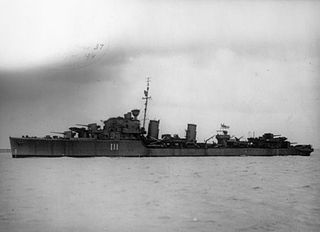
HMS Impulsive was an I-class destroyer built for the Royal Navy during the 1930s. She saw service in World War II before being scrapped in 1946. She has been the only ship of the Navy to bear this name.
HMS Whitshed (D77/I77) was an Admiralty modified W-class destroyer of the Royal Navy. She was ordered from Swan Hunter & Wigham Richardson Ltd under the 14th Order for Destroyers in the Emergency War Program of 1918–19. She was the first ship to carry the name.

HMS Keith was a B-class destroyer flotilla leader built for the Royal Navy around 1930. Initially assigned to the Mediterranean Fleet, she was placed in reserve in 1937, after repairs from a collision were completed. During the Spanish Civil War of 1936–1939, the ship was reactivated and spent some time in Spanish waters, enforcing the arms blockade imposed by Britain and France on both sides of the conflict. Keith escorted convoys and conducted anti-submarine patrols early in World War II before being sunk at Dunkirk by German aircraft.

HMS Vansittart was an Admiralty modified W-class destroyer built for the Royal Navy. She was ordered in January 1918 from William Beardmore & Company with the 13th Order for Destroyers of the Emergency War Program of 1918–19. She was the second Royal Navy ship to carry the name which was first used in 1821 for a hired packet.
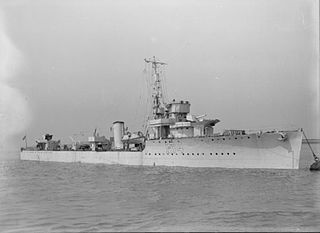
HMS Velox (D34) was a V-class destroyer built in 1918. She served in the last year of the First World War and was engaged in the Second Ostend Raid. During the interwar period she underwent a refit and continued serving during the Second World War as a long range convoy escort in the battle of the Atlantic. Post-war Velox was broken up in the reduction of the fleet. Sailors of the ship took part in the Royal Navy mutiny of 1919.

HMS Westminster was a W-class destroyer of the Royal Navy. She was the first ship to bear the name. Launched in 1918, she served through two World Wars, and survived both to be sold for scrap in 1947.

HMS Verity was an Admiralty modified W-class destroyer built for the Royal Navy. She was the first ship to carry the name Verity. She was ordered in January 1918 from John Brown & Company of Clydebank with the 13th Order for Destroyers of the Emergency War Program of 1918–19.
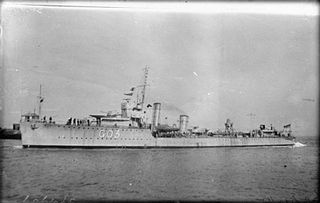
HMS Vortigern was a V-class destroyer of the Royal Navy. She served in both World Wars, and was sunk in 1942.
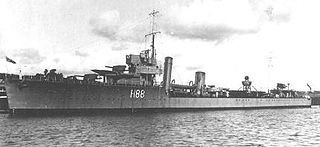
HMS Wakeful was a W-class destroyer of the Royal Navy, built under the 1916–1917 Programme in the 10th Destroyer order. Wakeful was assigned to the Grand Fleet after completion, and served into the early years of the Second World War. Wakeful was torpedoed and sunk during Operation Dynamo by a German E-Boat on 29 May 1940.

The first HMS Whirlwind was a W-class destroyer of the British Royal Navy that saw service during World War I and World War II.
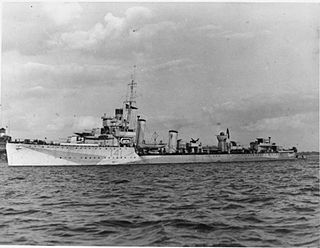
HMS Walpole (D41) was a W-class destroyer of the Royal Navy.

HMS Wren (D88/I88) was an Admiralty modified W class destroyer built for the Royal Navy. She was ordered in April 1918 from Yarrow Shipbuilders Limited under the 13th Order for Destroyers of the Emergency War Program of 1918–19. She was the third Royal Navy ship to carry the name, which was introduced in 1653.
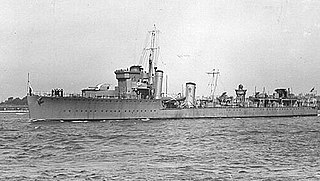
HMS Whitley (L23), ex-Whitby, was a W-class destroyer of the British Royal Navy that saw service in the British campaign in the Baltic Sea against Bolshevik forces during the Russian Civil War and in the early months of World War II.

The fifth HMS Valorous, ex-HMS Montrose, was a V-class flotilla leader of the British Royal Navy that saw service in World War I, the Russian Civil War, and World War II.

HMS Winchester was an Admiralty W-class destroyer of the Royal Navy. She saw service in the First and Second World Wars.
HMS Venetia (D53) was a V-class destroyer of the British Royal Navy that saw service in World War I and World War II.

The first HMS Walrus (D24) was a W-class destroyer of the British Royal Navy that saw service in the final months of World War I.
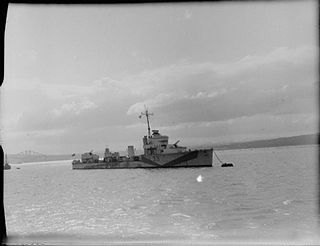
HMS Vivien (L33) was a V-class destroyer of the British Royal Navy that saw service in World War I and World War II.
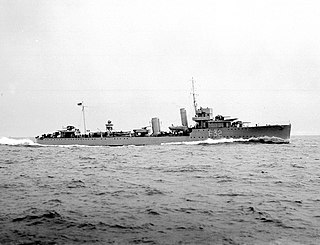
The first HMS Wessex (D43) was a W-class destroyer of the British Royal Navy that saw service in the final months of World War I and the early months of World War II.

HMS Viceroy (D91) was a W-class destroyer of the British Royal Navy that saw service in the final months of World War I and in World War II.
This page is based on this
Wikipedia article Text is available under the
CC BY-SA 4.0 license; additional terms may apply.
Images, videos and audio are available under their respective licenses.


















